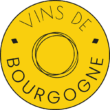A famous wine, from an area that has been winemaking for thousands of years. We are talking about Chablis. It is believed, that the name Chablis comes from two Celtic words: ‘cab’ and ‘leya’. This should then mean ‘house by forest’. Another theory is that Chablis comes from the Latin word ‘caplum’, meaning ‘ford’. In any case, its history goes back thousands of years, and the village has always been associated with wine.
There was already a settlement in the Serein Valley in the Neolithic (New Stone Age). This period began from 11,000 BC. The development of stone tools created the first agriculture and animal husbandry, and thus the first beginnings of viticulture. Later, there were farms of Gauls in the valley. There are strong indications that vines were already planted iij then.
The village of Chablis
The village of Chablis originated in Roman times. Emperor Domitian (81-96) had a number of villas built and uprooted all the vines. Under Emperor Probus (276-282), they were replanted. In the year 867, the Christian Charles the Bald was in power in the region. There were fears of the arrival of the Vikings who sailed up the Yonne via the Loire. To placate them, Charles gave them Chablis and the vineyards in the region. Later, in 1114, the monk Hugues de Mâcon founded the nearby abbey of Pontigny. This soon became famous. From Chablis, the abbey received vines to meet its needs. It was the monks of this abbey who put the Chablis wine region on the map. Chablis wines were transported to Paris on the River Yonne long before the advent of the railways. There, they graced the tables of the kings of France.
Prosperity and misfortune
In 1537, Chablis had a population of 4,000 (today it is only almost half that), and its wines were acclaimed throughout France. The advent of the printing press (Chablis had one of the few printing presses in France) contributed to the fame of the wines. In 1568, however, Chablis was attacked by the Huguenots, who burned down the Fauborg (upper town). The rest of the town was looted. It took two centuries for prosperity to return.
At the end of the 19th century, setback after setback followed. Vineyards were devastated by the vine diseases grape phylloxera and mildew. World War I broke out and this more than halved the local male population. The region was not spared in the Second World War either. In 1945, only about 500 hectares remained. Today, that is 10 times as much. Through considerable effort by local winemakers by, among other things, grafting Chardonnay vines onto rootstocks resistant to phylloxera, Chablis proved more resistant to disease. The use of‘Bordeaux porridge‘ to combat mildew also helped Chablis grow again.
However, it was not until the introduction of mechanisation and the start of heating in the vineyards that wine production really began to flourish again. 1970 became a bountiful vintage and marked the return of wealth in Chablis.
Anno now
Anno 2024, Chablis is a large and world-famous appellation. More than 300 winemakers operate on its more than 5,000 hectares. Chablis has a large cooperative(La Chablisienne) that has even managed to get the wine into supermarkets. Of course, this is accompanied by discussion about quality and reputation, but it also underlines the demand for the wine.
And then, of course, there are the excellent wines from wineries such as Dauvissat and Raveneau that are high on the list of top gastronomy and collectors worldwide. Chablis is one of the world’s most famous white wines. According to critics, this is also due to the fact that the name is a bit easier to pronounce for Americans and English. A lot easier than ‘Chassange Montrachet’, for example….
